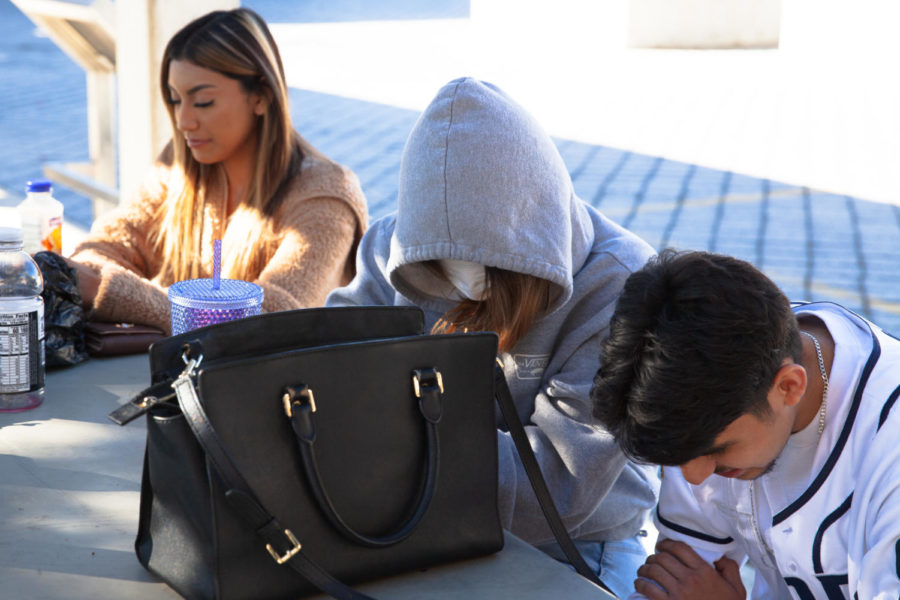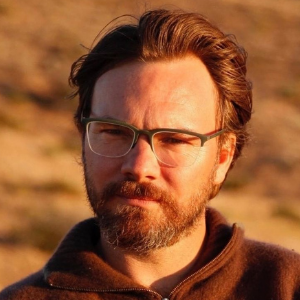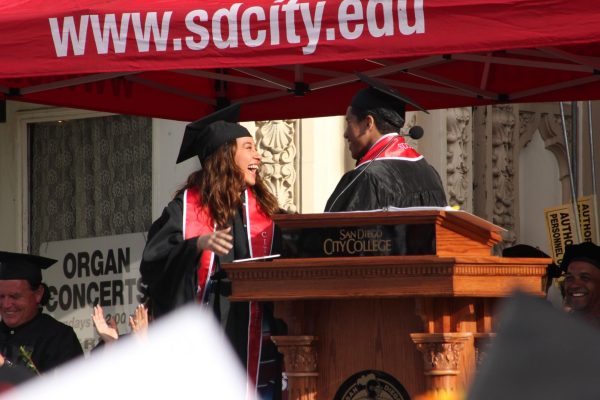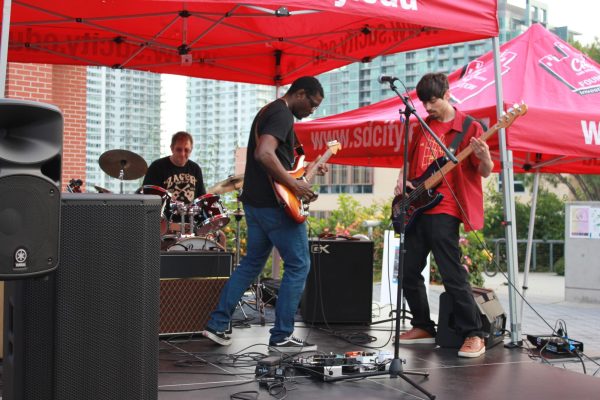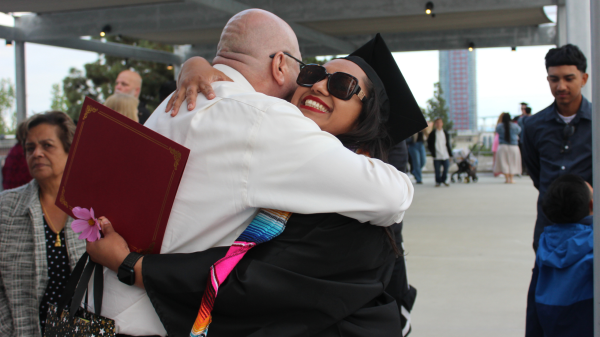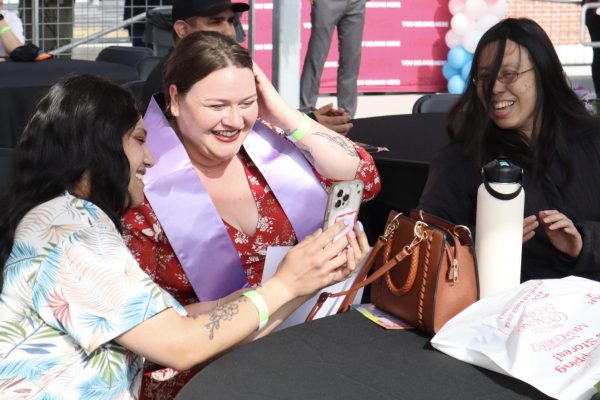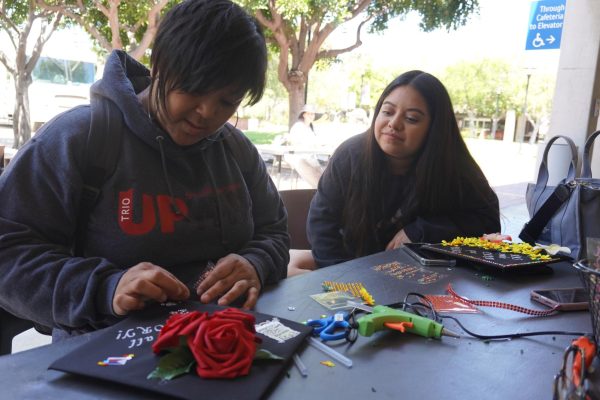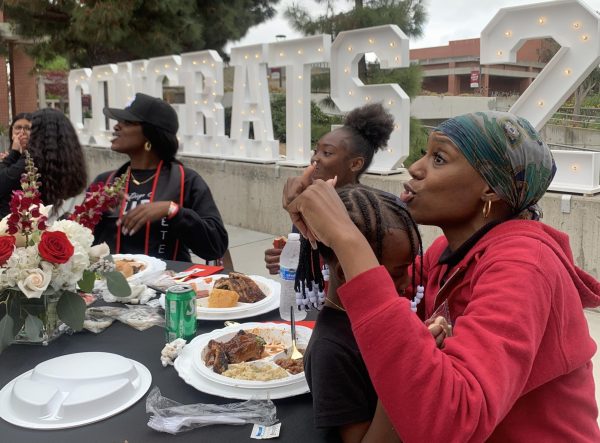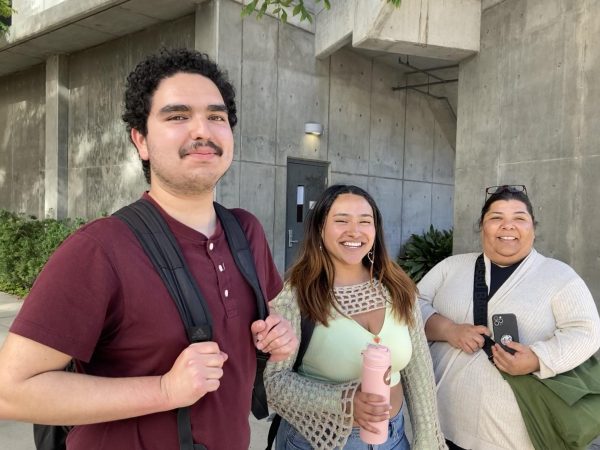City College set for a full return to campus Jan. 1
Chancellor Cortez outlines new goals for City College at a NOV. 8 public forum
Angie Barrera and fellow City College students negotiate a return to campus life. After almost two years of varying degrees of isolation, finding comfort in social environments is a highly individual process. Photo by Philip Salata/CTMedia
November 10, 2021
Full, yes, but the “new” full.
After a semester of experimentation with protocols to ensure a safe and manageable return to campus, district officials expressed their confidence in bringing back in-person student services at the public forum with San Diego Community College District Chancellor Carlos Turner Cortez on Nov. 8.
Eager to move beyond the budgetary disruption caused by the pandemic, as well as district-wide enrollment concerns, Cortez offered the San Diego City College community a lay of the land from the district perspective.
Though currently City College is the smallest campus in the district in terms of enrollment, Cortez suggested this may be changing.
“When I arrived here five years ago, City College was on a somewhat downward trajectory in terms of enrollment, but recently has been on an upward trajectory,” Cortez said.
According to a district report on the 2020-2021 academic year, there was indeed an increase in student headcount from the previous year. However, that is a year-to-year statistic, and more importantly, this increase comes at a time when pandemic measures are beginning to be lifted, so it may be largely due to students returning to or newly enrolling at City College after the lockdown.
Even so, Cortez explained the next bar must be set higher.
The metric used to determine how much funding a campus will receive from the state is based on the number of full-time-equivalent students (FTES). One FTES is equal to one student enrolled in 15 units, or five students each enrolled in a 3-unit course.
“Mcdonald’s has hamburgers,” Cortez said. “We have a business model as well. We function based on apportionment, which comes in the form of FTES.”
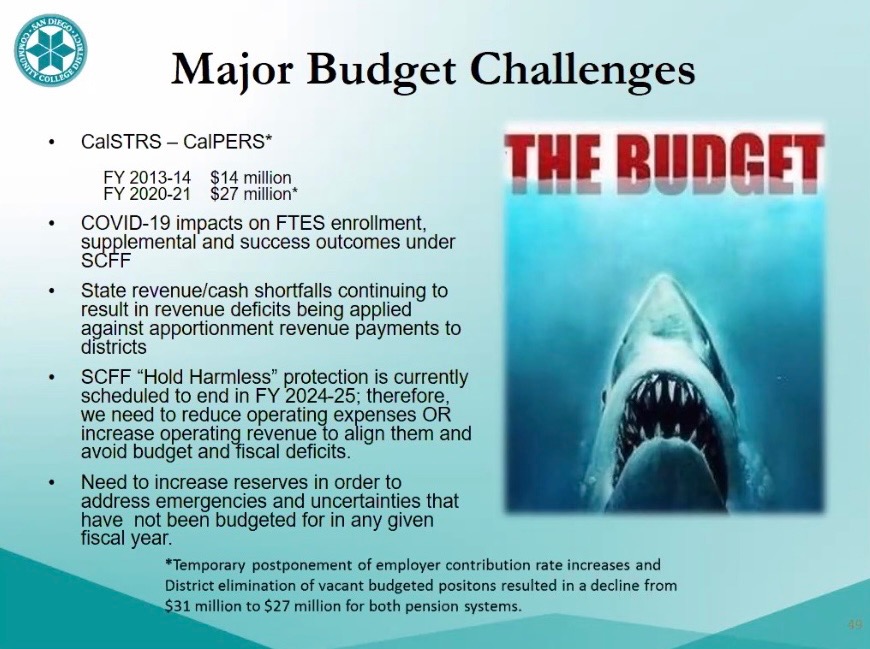
A report called the SDCCD Resident FTES Census showed a 6.9% decrease in total numbers in the 2018-2019 term at City College, the most recent report on the district website.
However, the document does confirm that both City College, as well as the entire district, are exceeding targets that some other districts are not even meeting.
Still, the district is operating at a deficit.
“We’re currently getting paid for more FTES than we generate,” Cortez said.
This is possible due to a provision that lowers, delays or simply grants exceptions to meeting regular metrics as a response to COVID-19-related variables, an emergency measure introduced by Governor Gavin Newsom referred to as “hold-harmless.”
Shortcomings do not currently jeopardize funding.
In a district message after Newsom’s 2020-2021 budget announcement, during the height of the pandemic, former Chancellor Constance Carroll compared education to the lighthouse of Alexandria as it “perform(s) the essential function of guiding ships away from danger and toward safe shores.”
Carroll emphasized the need to protect community colleges despite budgetary turbulence and underlined Newsom’s hold-harmless provision, which was recently extended through 2024-2025, as one of the measures helping sustain the system.
Offering on-campus services, though, seems to be key for the district to ensure that community colleges are able to turn their focus toward the future.
Cortez emphasized the development of bachelor’s programs as a focus with the recent passing of Assembly Bill 927 that made community college bachelor’s a reality.
The growth needed is dependent on numerous services that help make City College a viable option for a broad range of students, many of whom derive vital resources from services such as counseling, student health, the transfer center and financial aid.
Though these programs have existed in a remote capacity, not all students are able to utilize them with the same ease or to their fullest extent, even with the resources the district has worked to extend.
Jan. 1, the date scheduled for the campus-wide return, will mark the beginning of yet another experiment in analyzing the aftermath of these disparities and the way they have been affected by the pandemic.
City College President Ricky Shabazz expressed his excitement to move into a new phase of goal-setting and planning.
“We are looking forward to moving away from crisis aversion to thriving,” he said.
In turn, Cortez praised the achievements of City College, insisting that meeting “the target last year during COVID is a great testament to the excellent work that the faculty and the classified professionals who are supporting our students are doing every day.”
Multimedia journalist Will Mauriz contributed to this report.


